Contents
Budget hotels: Capsule, Book and bed, Net cafe
Capsule hotels
Capsule hotels are a unique type of accommodation in Japan that are affordable and offer a fantastic experience. They typically consist of small, capsule-like rooms that are big enough for a single person to sleep in. In addition, they’re often located in busy areas, making them convenient for travelers who want to be close to the action.
The price varies depending on the location and the quality of the hotel. Generally, you can expect to pay around 2,000 to 4,000 yen per night for a capsule hotel in a major city like Tokyo or Osaka. However, sometimes, prices may be higher for more luxurious or well-located hotels.
Here is our experience:
Book and Bed
The concept of Book and Bed is to offer guests a comfortable and affordable place to stay while also providing a unique experience for book lovers.
The hostel chain currently has several locations throughout Japan, including Tokyo, Kyoto, Fukuoka, and Osaka. The rooms in Book and Bed are designed to look like small bookshelves, with a comfortable bed and small reading light. In addition, guests have access to a shared bathroom and shower facilities and a communal lounge area where they can relax and read.
The prices at Book and Bed generally range from around 2,500 to 5,000 yen per night. Some locations may also offer private rooms or capsule-style beds for an additional fee.
Net cafes
Also known as “internet cafes” or “manga cafes”. They are establishments where people can rent a private booth or cubicle to use a computer with internet access, as well as other amenities such as gaming consoles, manga and anime libraries, and snacks and drinks. They can also be a budget-friendly option for travelers who need a place to sleep for a few hours or a night.
Generally, you can expect to pay around 1,000 to 3,000 yen for a few hours. Or around 2,000 to 4,000 yen for an overnight stay. Some net cafes may also offer additional amenities, such as shower facilities or snacks and drinks for purchase.
It’s important to note that net cafes are not designed for long-term stays, and may not be the most comfortable option for sleeping. In addition, the cubicles are usually small and offer limited space to move around. So they may not be suitable for those who are claustrophobic or require more space.
Top 5 unique accommodation types in Japan
Vending machine
Vending machines are a common sight in Japan. They are almost everywhere, from train stations and street corners to office buildings and shopping centers. These machines offer a wide range of products, from drinks and snacks to cigarettes and even umbrellas.
In Japan, vending machines are typically coin-operated, and some also accept bills and electronic payments like IC cards. Prices for items in vending machines range from around 100 to 500 yen, depending on the product.
They offer a quick and easy way to purchase everyday items and are a unique and exciting aspect of travel to Japan.
Coin lockers in the station
Coin lockers are a common feature in train stations in Japan. They provide a convenient and secure way to store luggage or personal items while traveling. These lockers are typically near the station entrance or the station’s concourse area.
Coin lockers are operated using coins, and the rental cost varies depending on the locker size and the rental duration. The rental fees for a small locker are typically around 300 to 500 yen per day. Larger lockers can cost up to 800 yen per day. It’s also possible to rent a locker for a shorter period, such as a few hours, for a lower fee.
Coin lockers are a convenient and affordable option for travelers who need to store their luggage or personal items while exploring a city or waiting for a train. They’re also considered safe and secure, with most lockers featuring a sturdy and durable design.
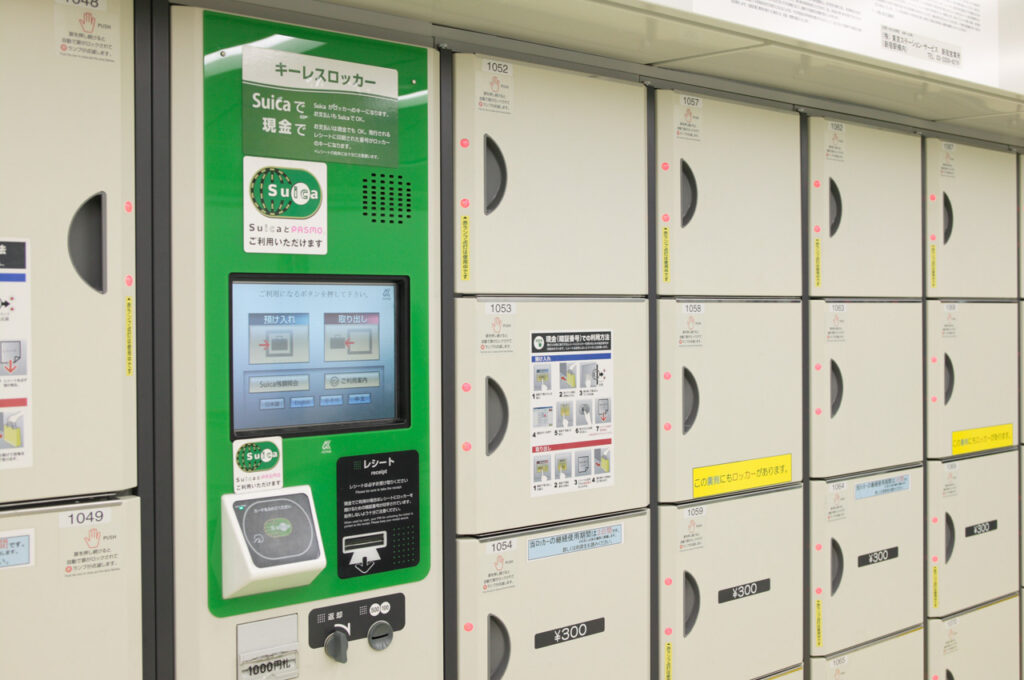
Convenience store
Also known as “Combini” stores in Japan. These are often open 24 hours a day, seven days a week. They are a convenient and affordable source for many products, including snacks, drinks, ready-to-eat meals, toiletries, and more.
Combini stores provide an extensive selection of items that encompass domestic and global brands. In addition, they often feature a large selection of food and drinks, with pre-made meals, snacks, and beverages available for purchase. Some stores also have seating areas where customers can eat and drink their purchases on-site.
Apart from edibles and beverages, combini stores in Japan furnish an assortment of diverse commodities and facilities, including:
- ATMs: Many combini stores accept international credit and debit cards, making it easy for travelers to withdraw cash.
- Wi-Fi: Some offer free Wi-Fi for customers.
- Postal services: Such as shipping and receiving packages.
- Ticket sales: For concerts, events, and transportation, such as train tickets and bus passes.
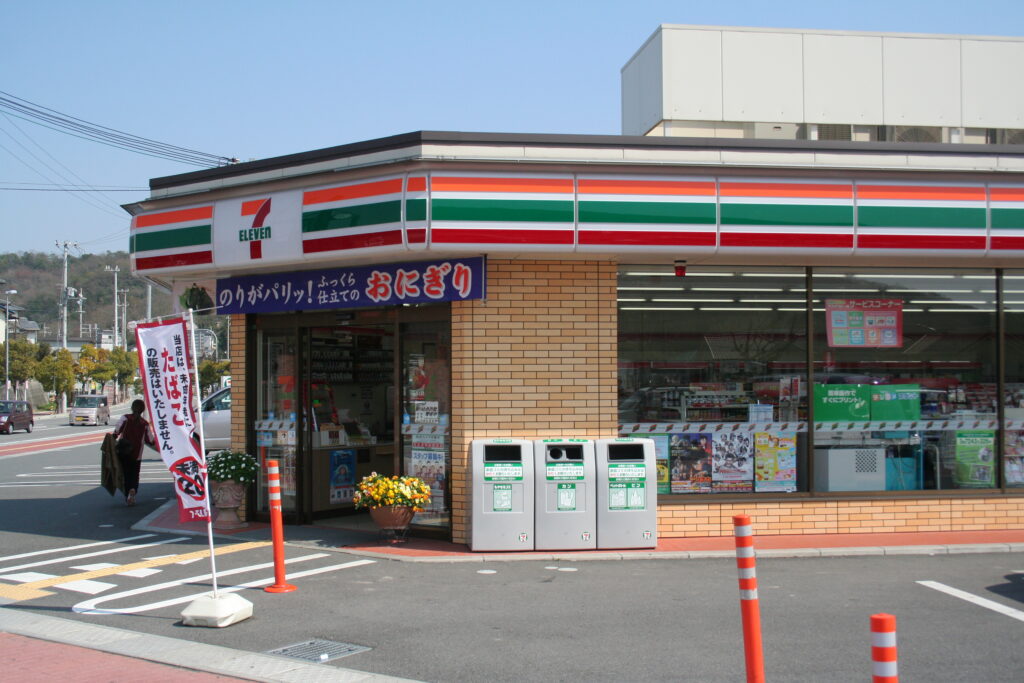
The Japan Rail Pass
If you plan to travel around Japan by train, consider getting a Japan Rail Pass (JR Pass) before you arrive. It allows unlimited travel on Japan Railways Group trains, including shinkansen (bullet trains), limited express trains, local trains, and even some buses and ferries.
The JR Pass is available for purchase outside of Japan and must be purchased before arriving in Japan. It is available in 7-day, 14-day, and 21-day durations and offers significant savings compared to purchasing individual train tickets. The prices vary depending on the type of pass (standard or green pass – first class):
- 7-day standard pass: 29,650 yen
- 7-day green pass: 39,650 yen
- 14-day standard pass: 47,250 yen
- 14-day green pass: 64,120 yen
- 21-day standard pass: 60,450 yen
- 21-day green pass: 83,390 yen
The JR Pass is an excellent option for travelers who plan to do a lot of intercity travel during their visit to Japan.
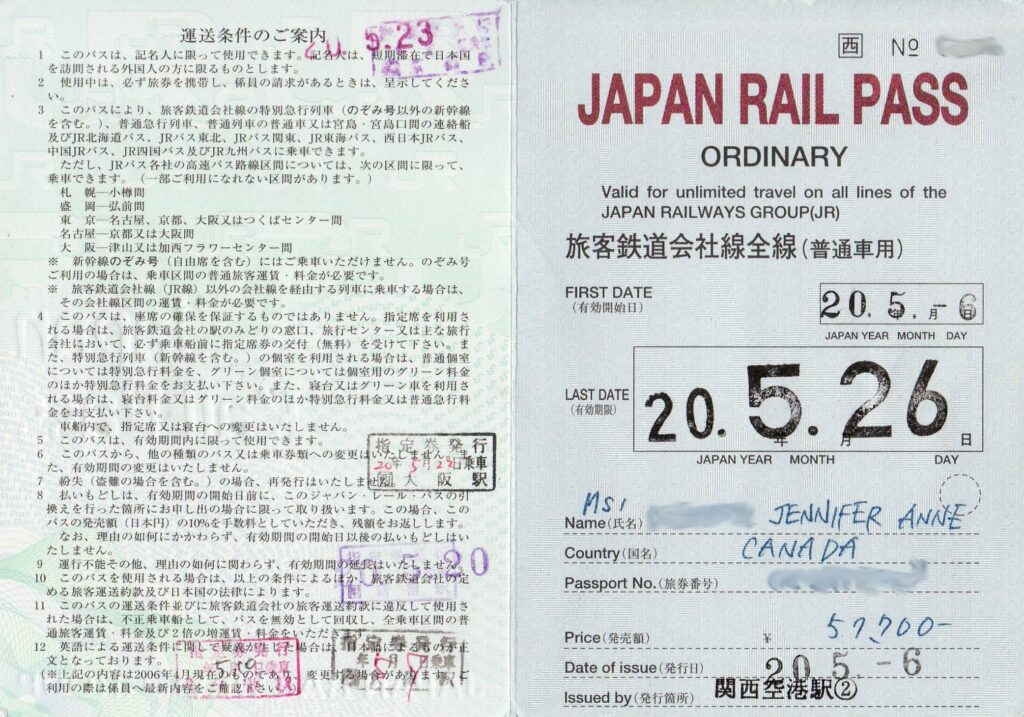
Train app
Several train apps in Japan can help you navigate the country’s extensive railway system. One of them is “Yahoo!乗換案内” (Yahoo! JAPAN Transit). It is a famous train app in Japan that provides comprehensive train and bus route information throughout the country. This app is available in Japanese and can be downloaded for free from the App Store and Google Play.
With Yahoo!乗換案内, you can effortlessly search for train and bus routes between any two points in Japan, and view real-time train schedules, route maps, and fare information. In addition, the app offers features like the ability to save your favorite routes and stations and to set reminders for train departures.
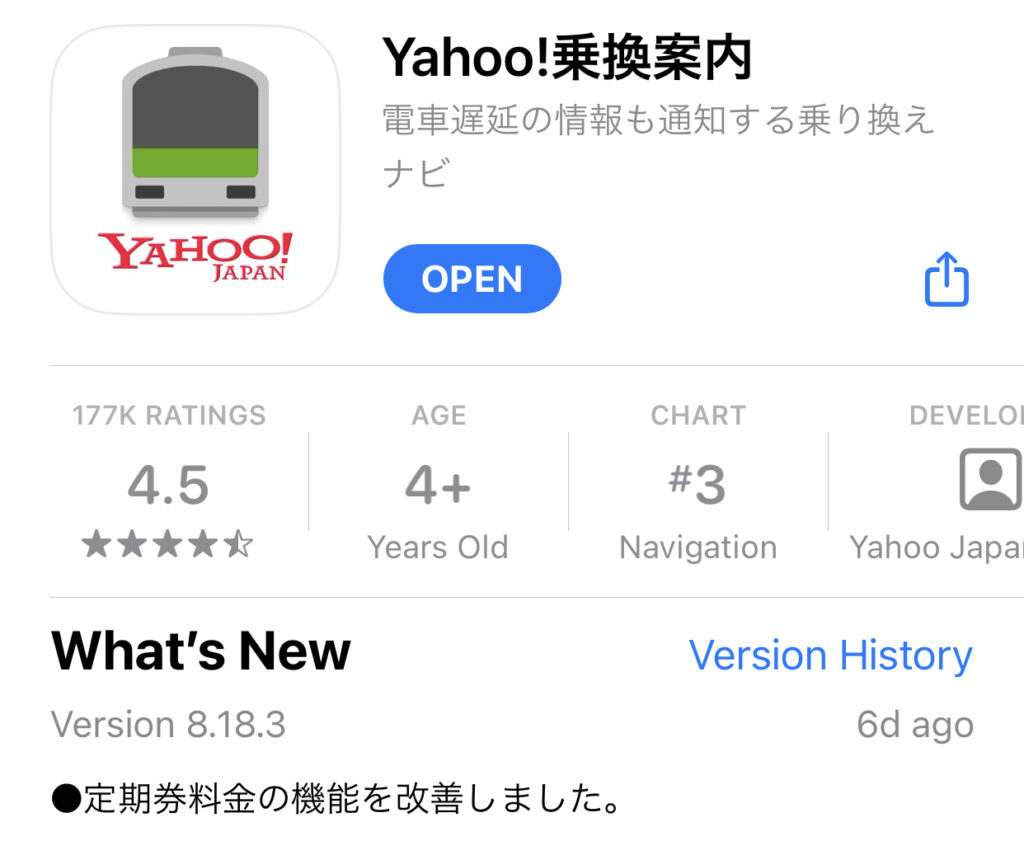
** When using public transportation, be mindful of local etiquette. For example, don’t talk loudly on your phone or eat on trains.
Train card
Particularly for travelers who plan to use public transportation frequently during their visit, train cards can be a very convenient and cost-effective way in Japan. These cards can be purchased at train stations and often top-up at stations, convenience stores, and other locations throughout Japan.
These cards are very convenient for travelers, allowing easy and quick access to public transportation without purchasing individual tickets for each ride.
- Suica and Pasmo: Suica and Pasmo are two of Japan’s most popular train cards. They can be used on trains, subways, buses, and even some vending machines and convenience stores. These cards are rechargeable and can be used to pay for fares simply by tapping them on the ticket gate reader.
- ICOCA: ICOCA is another popular train card in Japan, particularly in the Kansai region (which includes Osaka, Kyoto, and Kobe). Like Suica and Pasmo, ICOCA is a rechargeable card that can be used for public transportation and other services like vending machines and lockers.
- Toica: Toica is a train card primarily used in the Tokai region (which includes Nagoya and surrounding areas). It can be used on trains, buses, and some subways and can also be used for other services like shopping and dining.
- Kitaca and Sapporo IC Card: These train cards are primarily used in the Hokkaido region (which includes Sapporo and surrounding areas). They can be used on trains, buses, and some subways, as well as for other services like shopping and dining.
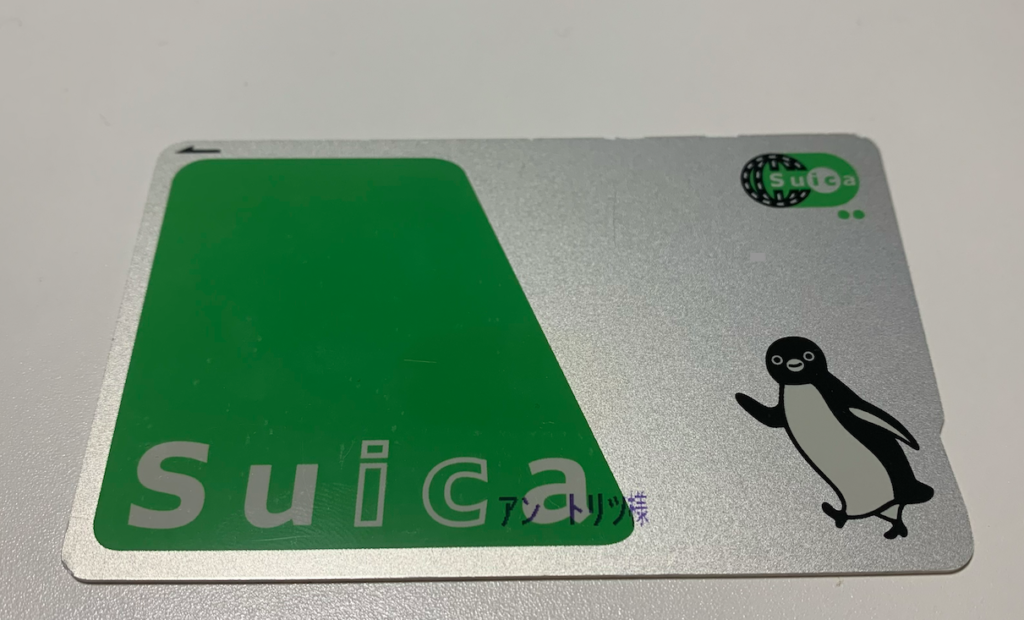
Bring cash
Although credit cards are widely accepted in big cities, having some cash on hand is still a good idea, especially if you’re traveling to rural areas or smaller towns.
Cheap sushi restaurants
Japan is known for having some of the best and freshest sushi in the world, but it can also be quite expensive. However, there are some cheap sushi shops in Japan where you can still enjoy a variety of sushi, including nigiri, rolls, sashimi, and even dessert sushi, without breaking the bank. Here are a few options offering affordable prices, with sushi plates starting at just 100 yen:
- Kura Sushi
- Sushiro
- Hamazushi
- Uogashi Nihon-Ichi
- Sushi Zanmai
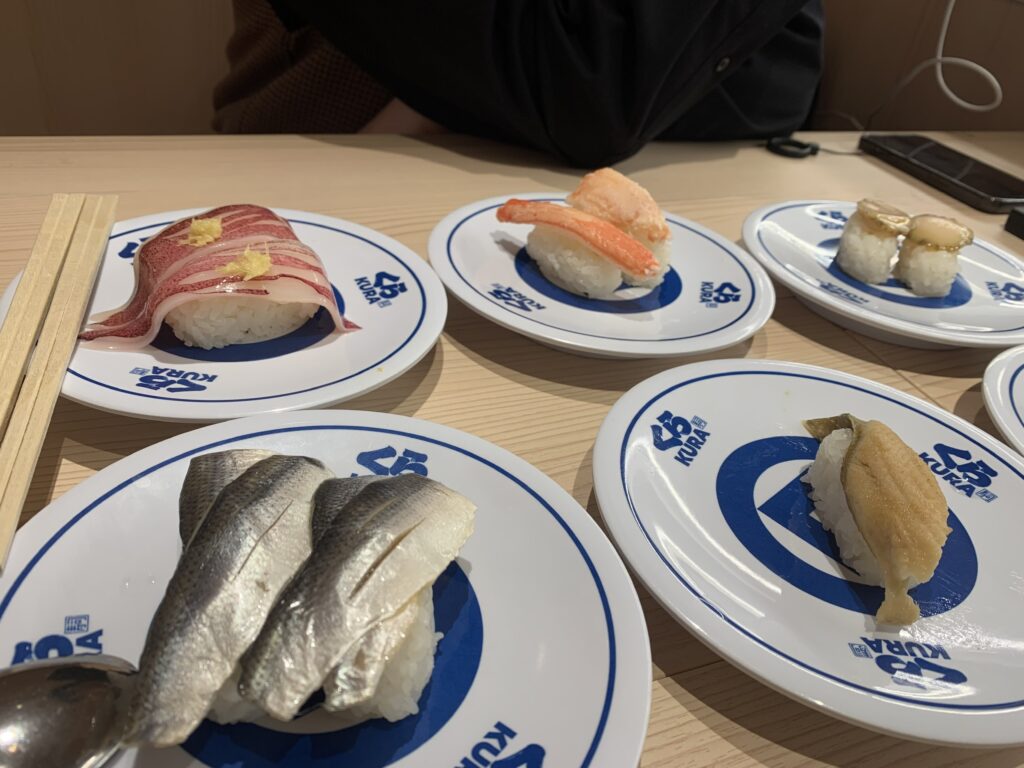
Note that large stations will have many exits
Large stations in Japan, especially those located in major cities, often have many exits. This is because these stations serve as transportation hubs for large numbers of people, and having multiple exits allows for easier access to various destinations in the surrounding area.
For example, Tokyo Station, one of Japan’s busiest stations, has over 10 exits. Each of which leads to different parts of the city. Similarly, Shinjuku Station, another major station in Tokyo, has over 200 exits.
It’s important to pay attention to which exit you need to take when navigating through a large station in Japan, as taking the wrong exit could lead you in the wrong direction or cause you to get lost. Many stations have signs and maps to help guide you to the correct exit, and you can also ask station staff for assistance if needed.
Use Google Maps to know which exit will help you get to the place you need to go fastest.



